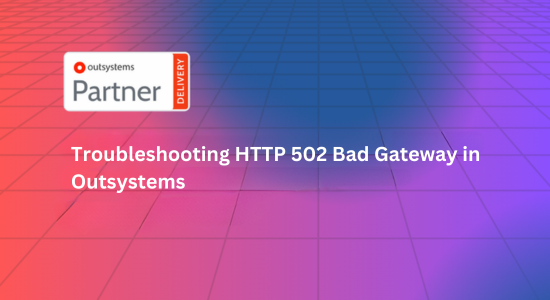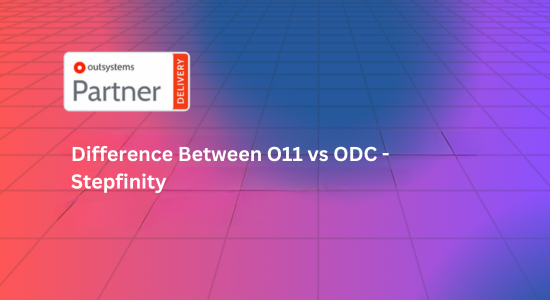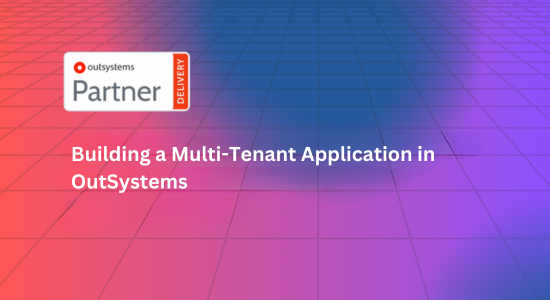In today’s fast-paced digital landscape, the ability to develop and deploy applications quickly is critical for businesses striving to stay ahead of the competition. Traditional development methods, though reliable, often struggle to keep pace with the increasing demand for rapid and agile solutions. This is where OutSystems comes into play—a platform that revolutionizes the way applications are built, deployed, and scaled.
OutSystems is widely regarded as the ultimate tool for Rapid Application Development (RAD), providing an array of features that streamline the development process, reduce time-to-market, and enhance the overall quality of applications. In this comprehensive guide, we’ll explore the key aspects that make OutSystems a go-to platform for developers and organizations alike.
1. Low-Code Development: Simplifying the Complex
One of the defining characteristics of OutSystems is its low-code approach, which democratizes the development process by enabling both experienced developers and those with limited coding knowledge to build sophisticated applications.
Visual Development Environment
OutSystems offers a highly intuitive visual development environment. Instead of writing extensive lines of code, developers can design applications using a drag-and-drop interface. This visual approach significantly reduces the complexity of application development, allowing for faster iterations and easier maintenance.
The visual environment also promotes better collaboration between technical and non-technical team members. Business analysts, for example, can directly contribute to the development process, ensuring that the final product aligns closely with business requirements.
Drag-and-Drop Functionality
The drag-and-drop functionality is at the core of OutSystems’ low-code capabilities. Developers can easily create user interfaces (UIs), define workflows, and manage data models by simply dragging and dropping pre-built components into the design canvas. This not only speeds up the development process but also minimizes the potential for errors, as much of the underlying code is generated automatically by the platform.
2. Speed and Efficiency: Accelerating Time-to-Market
Time is of the essence in application development, and OutSystems excels in accelerating the development lifecycle from concept to deployment.
Rapid Prototyping
OutSystems is particularly well-suited for rapid prototyping. Developers can quickly build functional prototypes that demonstrate the core features of an application. These prototypes can be shared with stakeholders for feedback, allowing for early adjustments and refinements. This iterative process ensures that the final product meets user expectations and reduces the risk of costly rework later in the development cycle.
Pre-Built Components and Templates
To further enhance speed and efficiency, OutSystems provides a vast library of pre-built components and templates. These ready-made elements can be easily customized to meet specific requirements, saving developers from having to build every feature from scratch. Whether it’s a login form, a data entry screen, or an entire module, developers can leverage these components to accelerate the development process.
Automatic Code Generation
OutSystems automatically generates much of the underlying code for the application based on the visual designs created by developers. This not only speeds up development but also ensures that the code is consistent, well-structured, and adheres to best practices. Developers can focus on fine-tuning the application rather than spending time on routine coding tasks.
3. Scalability: Building for the Future
OutSystems is designed to support the development of scalable applications that can grow with your business.
Enterprise-Grade Applications
OutSystems is capable of supporting enterprise-grade applications, making it suitable for organizations of all sizes. Whether you’re building a simple app for internal use or a complex solution that serves millions of users, OutSystems provides the tools and infrastructure needed to scale efficiently.
The platform’s architecture is built to handle large volumes of data and high user traffic, ensuring that applications remain responsive and reliable as they scale. Additionally, OutSystems offers robust security features, including data encryption and role-based access control, to protect sensitive information.
Cloud and On-Premises Deployment
OutSystems provides flexibility in how applications are deployed. You can choose to deploy applications in the cloud, on-premises, or in a hybrid environment, depending on your organization’s needs. This flexibility is particularly valuable for organizations with specific regulatory or compliance requirements.
Cloud deployment allows for automatic scaling, ensuring that your application can handle increased traffic without manual intervention. On-premises deployment, on the other hand, gives you full control over your infrastructure and data, which can be critical for certain industries.
4. Integration Capabilities: Connecting the Dots
In today’s interconnected digital ecosystem, the ability to integrate with other systems is crucial. OutSystems excels in this area, offering seamless integration capabilities.
Seamless Integration with Existing Systems
OutSystems makes it easy to integrate your application with existing systems, databases, and third-party APIs. Whether you need to connect with legacy systems, CRM platforms, or payment gateways, OutSystems provides a range of connectors and integration tools to streamline the process.
The platform’s integration capabilities extend to popular enterprise systems such as SAP, Salesforce, and Microsoft Dynamics. OutSystems also supports REST and SOAP web services, allowing for integration with virtually any system that exposes an API.
Extensibility with Custom Code
While OutSystems is a low-code platform, it recognizes that there are times when custom code is necessary to achieve specific functionalities. The platform provides the flexibility to write custom code in languages like C#, Java, and JavaScript, allowing developers to extend the capabilities of their applications beyond what’s available in the visual development environment.
This balance between low-code and traditional coding ensures that developers are not limited by the platform’s capabilities and can build even the most complex and customized solutions.
5. DevOps and Automation: Streamlining Deployment
OutSystems not only simplifies application development but also enhances the deployment process through robust DevOps and automation features.
Continuous Integration and Continuous Deployment (CI/CD)
OutSystems supports Continuous Integration and Continuous Deployment (CI/CD) practices, enabling automated deployment pipelines. This automation reduces the time between development iterations and ensures that updates can be deployed quickly and reliably.
With OutSystems, developers can push updates to production with confidence, knowing that the platform automatically handles versioning, rollback, and dependency management. This level of automation minimizes downtime and ensures that your application remains up-to-date with the latest features and security patches.
Automated Testing and Quality Assurance
Quality is a top priority for any application, and OutSystems integrates with automated testing tools to ensure that applications meet high standards of performance and reliability. The platform supports unit testing, integration testing, and end-to-end testing, allowing developers to catch issues early in the development cycle.
OutSystems also provides tools for monitoring application performance in real-time, enabling proactive identification and resolution of potential issues before they impact users.
6. User Experience (UX) Focus: Crafting Delightful Applications
A great user experience is essential for the success of any application. OutSystems provides a range of tools and best practices to help developers create applications that are not only functional but also intuitive and engaging.
Responsive Design
OutSystems ensures that applications are designed to be responsive, meaning they work seamlessly across a variety of devices, including desktops, tablets, and smartphones. The platform provides tools for creating flexible layouts that automatically adjust to different screen sizes and orientations.
By leveraging OutSystems’ responsive design capabilities, developers can create applications that deliver a consistent and high-quality user experience, regardless of the device being used.
User-Centric Design
OutSystems emphasizes the importance of user-centric design, encouraging developers to focus on the needs and preferences of the end-users. The platform provides a variety of UI patterns and design templates that adhere to UX best practices, helping developers create interfaces that are intuitive and easy to navigate.
Additionally, OutSystems supports user testing and feedback loops, allowing developers to iterate on designs based on real user input. This iterative approach ensures that the final product is not only functional but also enjoyable to use.
7. Community and Support: Empowering Developers
OutSystems’ success is bolstered by a strong and vibrant community, as well as extensive support resources that empower developers at every stage of the development process.
Vibrant Developer Community
OutSystems boasts a large and active community of developers who share knowledge, resources, and best practices. Whether you’re a beginner looking for guidance or an experienced developer seeking advanced tips, the community is a valuable resource for learning and problem-solving.
The community also hosts regular events, webinars, and hackathons, providing opportunities for developers to network, collaborate, and showcase their skills.
Comprehensive Documentation and Training
OutSystems offers a wealth of documentation and training resources to help developers get up to speed quickly. The platform’s documentation is thorough and well-organized, covering everything from basic concepts to advanced features.
In addition to documentation, OutSystems provides a variety of training options, including online courses, tutorials, and certification programs. These resources are designed to help developers build expertise in the platform and achieve their professional goals.
Conclusion: OutSystems—A Game Changer in Application Development
OutSystems stands out as the ultimate tool for rapid application development, offering a low-code platform that combines speed, scalability, and flexibility. Whether you’re building simple apps for internal use or complex solutions for a global audience, OutSystems provides the tools and support needed to accelerate development, reduce time-to-market, and deliver high-quality applications.
With its focus on low-code development, seamless integration, robust DevOps practices, and exceptional user experience, OutSystems empowers developers to create innovative and impactful applications that drive business success. As the demand for agile and efficient development continues to grow, OutSystems.








